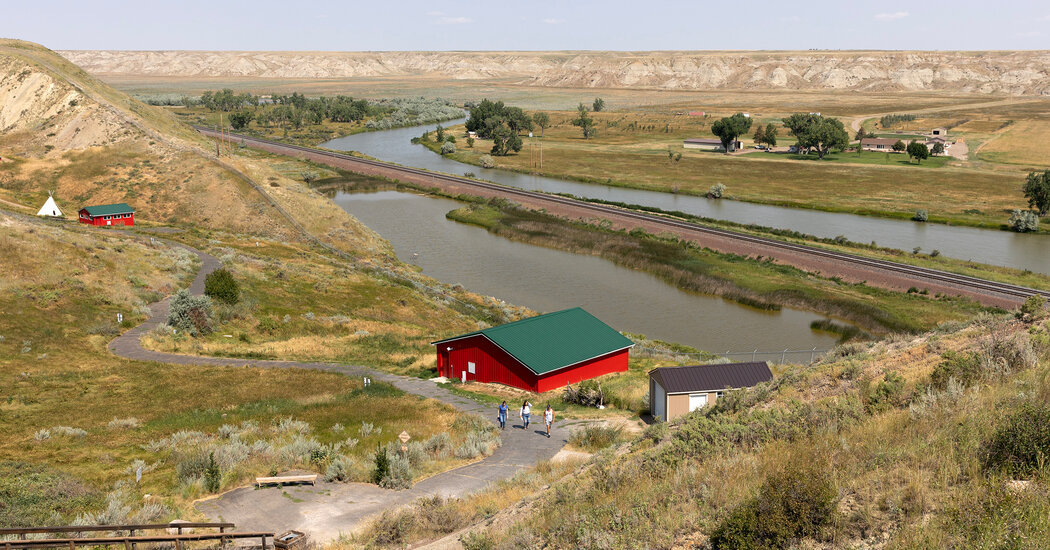Recently, western Montana and cities like Bozeman are experiencing a surge in popularity because of the wildly successful drama “Yellowstone” and its prequels “1883” and “1923.”
But some of Montana’s most intriguing areas are those that remain untouched by the limelight.
The Hi-Line is one of them. It’s the stretch of U.S. Highway 2 that traverses northern Montana for about 650 miles.
Remote and vast, this part of Montana is a place where rows of golden wheat fields recede into endless horizons; where a long two-lane highway is colored by grain elevators, railroad cars and century-old homesteading remnants; and where you might drive past a welcome sign that reads: “RUDYARD: 596 Nice People — 1 Old Sore Head!”
In May, I traveled to the Hi-Line for a three-day road trip to explore the section between the towns of Shelby, in the west, and Malta, in the east. This 190-mile expanse was once shortgrass prairie — until the 1890s, when the Great Northern Railroad, under the leadership of James Hill, laid down steel tracks across the open plains. Soon afterward, settlers followed, wheat farms proliferated and, eventually, when roads were paved and joined together, Montana’s U.S. Highway 2 was established. Today, when people refer to the Hi-Line, they don’t just mean a strip of pavement; instead, the name refers to an area that encompasses the road, the railway and the neighboring farms, ranches, homes, businesses and communities.
In Shelby, after peering into several of its windows, it became clear that the Marias Museum of History and Art was closed. But a nearby resident who was outside in his yard referred me to his neighbor, whose wife’s family knew someone from the museum. In a matter of moments, the neighbor’s wife had the phone number of Tracy Dumas, a museum guide. Mr. Dumas’s wife, Luana, answered the neighbor’s wife’s phone call and explained that Mr. Dumas was mowing the lawn, which was exactly what Mrs. Dumas wanted him to be doing.
Thirty minutes later, on a break from his yardwork, Mr. Dumas, who has lived in Shelby his entire life — “I’m either tough or dumb,” he said — let me into the museum. The collection includes homesteading memorabilia; boxing gloves that belonged to Tommy Gibbons, a contender in Shelby’s 1923 world heavyweight title bout against Jack Dempsey; and a reptile display mounted by the renowned paleontologist Jack Horner, a Shelby native who served as an adviser on many “Jurassic…
Click Here to Read the Full Original Article at NYT > Travel…
